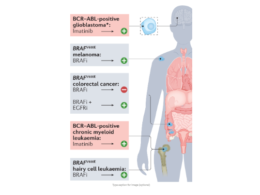Life scientists are preparing to test quantum computers for applications beyond computational chemistry, such as selecting responders to cancer therapies.
Nature Biotechnology
Alison Abbott
09 November 2021
Cancer researchers will be among the first to test the potential of Europe’s first IBM quantum computer, which was unveiled in Germany this summer. The 27-qubit IBM Q System One is among the most powerful commercial quantum computers in Europe.
Based at IBM’s German headquarters in Ehningen, near Stuttgart, it is jointly operated by IBM and the Fraunhofer Society, Germany’s multidisciplinary applied research organization headquartered in Munich.
The Fraunhofer Society is making the quantum computer available to researchers wishing to test ideas for practical applications of quantum computers, including in life sciences.
The most promising application in biomedicine is in computational chemistry, where researchers have long exploited a quantum approach.
But the Fraunhofer Society hopes to spark interest among a wider community of life scientists, such as cancer researchers, whose research questions are not intrinsically quantum in nature.
“It’s uncharted territory,” says oncologist Niels Halama of the DKFZ, Germany’s national cancer center in Heidelberg.
Working with a team of physicists and computer scientists, Halama is planning to develop and test algorithms that might help stratify cancer patients, and select small subgroups for specific therapies from heterogeneous data sets.
This is important for precision medicine, he says, but classic computing has insufficient power to find very small groups in the large and complex data sets that oncology, for example, generates.
The time needed to complete such a task may stretch out over many weeks-too long to be of use in a clinical setting, and also too expensive.
Moreover, the steady improvements in the performance of classic computers are slowing, thanks in large part to fundamental limits on chip miniaturization.
Quantum computing, though still in its infancy, may offer a solution to this problem. It promises to push computing power well beyond current bounds, thanks to the peculiar properties of quantum particles, which exist in more than one state at the same time.
Whereas classic computers work with bits-assigned values of zero or one-quantum computers use qubits, which exist in many states at once and thus process exponentially more data per operation.
Companies developing quantum computing have adopted different technological approaches.
- Some, such as IBM and Google, use a physical type of qubit made from superconducting materials, such as niobium or aluminum patterned on a silicon substrate.
- Others-such as IonQ of College Park, Maryland, or LioniX International of Enschede, b-generate qubits from ion traps or photons, among other approaches.
The European Union, United States, China and many other countries are pouring billions of dollars into hardware development
One of the major challenges that the companies confront is that faced by Erwin Schrödinger’s quantum cat in his 1935 thought experiment. In the quantum world, the cat is both alive and dead in its box-but it is either dead or alive as soon as an experimenter examined the box. Qubits similarly lose their quantum properties when they are exposed to the environment. This makes quantum computers very error-prone, particularly as their numbers of qubits increase. As yet, developers have not managed to create universal quantum computers with enough qubits to directly test many proposed bioscience applications.
Although access to quantum hardware is currently limited, scientists exploring potential applications have been testing their quantum algorithms on simulators, classic high-performance computers programmed to mimic quantum processing.
Many are turning to quantum computing to see if it can help with problems at the atomic or molecular scale, such as predicting how large proteins fold, solving enzyme chemistry problems like how nitrogenase catalyzes nitrogen fixation, identifying transcription factor binding sites in DNA molecules and performing de novo DNA assembly.
The most promising application is in computational chemistry, where medicinal chemists now routinely apply quantum mechanics to describe molecules of interest and their reactions.
Quantum computers can theoretically simulate molecular dynamics more accurately than classic computers because, just as all real-life electrons in a molecular system see all of the other electrons at the same time, all qubits in a quantum computer see all the other qubits at the same time.
Most major pharmaceutical companies are investigating the possibilities of quantum computing in drug design, says Clemens Utschig-Utschig, chief technology officer at Boehringer Ingelheim, headquartered in Mainz, Germany. In January, Boehringer Ingelheim announced a partnership with Google to develop quantum algorithms for this approach.
“I think the approach will be fruitful in the next few years,” says Christopher Tautermann, who heads the company’s computational chemistry. “We are betting on the future.”
It remains less clear whether and how quantum computing will prove useful in analyzing the big, diverse datasets that genomics researchers and neuroscientists generate. Quantum computers do not, as yet, allow large data sets to be input. To investigate whether quantum computing might be able to quickly and reliably identify small subgroups of patients within large, complex datasets-from genomics to histology-who may respond to the same therapies, Hamala is trying two different approaches. One involves algorithms for a form of machine learning for quantum processing that might require smaller training datasets than conventional computing. This approach has shown promise on human tumor data from the Cancer Genome Atlas.
The other involves designing entirely new types of algorithms based on different mathematics-topological algebra, which quantum computing handles well-to sift through data and fish out interesting pieces hidden there.
“There is no guarantee that the quantum system will deliver the solutions we want,” he stresses. “But there are indications that merit follow-up.” An important aspect of the research, according to Hamala, is that within the Fraunhofer-IBM agreement, all research projects and user data remain in Germany, and the IBM Q System One operates in accordance with Germany’s strict data-protection law.
Quantum computing won’t be able to solve all of the problems that life scientists are hoping for, says computational biologist Charlotte Deane from the University of Oxford in the UK, who is taking this approach in her work on protein folding.
“It will speed up a limited number of tasks for us, and we need to correctly identify those tasks now.”
In ten years or so, she predicts, “quantum computing will become a tool of the trade for someone like me.”
Originally published at https://www.nature.com on November 9, 2021.












